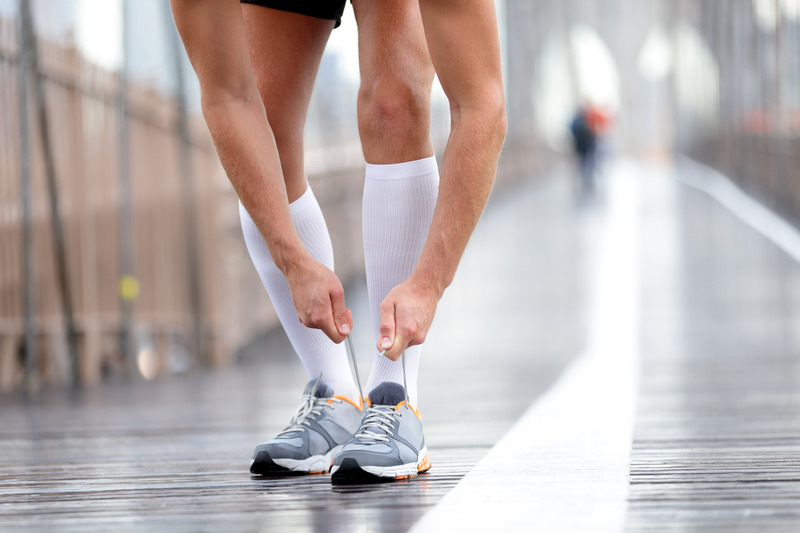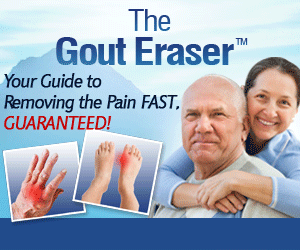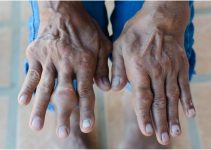
Gout is a type of arthritis mainly affecting the big toe joints. But, you may also find your gout symptoms in your knees, ankles, and toes. It becomes very difficult to do physical activities with gout. Patients think that regular physical activities may worsen gout conditions. They also claim that they feel comfortable while resting and elevating their feet. However, the biggest question is- Should I walk with gout? Does walking cause any effect on gout?
Several therapists have found that walking is a joint-friendly activity, and thus, it is good for gout-related pain. A brief discussion on this topic will remove your concerns. You will learn about the way of managing and treating this condition.
Does walking on gout foot make it worse?
It is safe to walk with gout, and patients with severe arthritis may also walk regularly. Walking does not affect your joints and eliminates the potential for injury. Similar to walking, swimming and cycling are not harmful to your joints.
You can engage yourself in some moderate-intensity activities for at least 150 minutes every week. But, according to therapists and physicians, the symptoms of gout become intense slowly. Thus, you have to focus on how your body tolerates different physical activities. Based on your gout symptoms, you have to adjust your routine for physical activities. When you find the condition slowly becoming complicated, you can reduce the time for these activities.
Physical workouts and walking for patients with gouts
While left untreated, gout may erode your joints and ultimately destroy them. For this reason, you have to rely on medical treatment for this condition.
It is essential to keep your joints healthy while you have some symptoms of gout. Involve yourself in physical activities (like walking) and workouts for two major reasons.
1. By controlling a proper weight, you can reduce the stress on your joints
You have to create a healthy diet routine to keep your weight under control. A proper diet also enables you to decrease your blood pressure. These steps are helpful for patients having high uric acid. However, do not lose weight very fast, as it will increase your uric acid.
2. Physical exercising controls your gout and lowers your uric acid levels
Researchers have observed that your body fat carries a higher amount of uric acid compared to your muscles. The development of cardiovascular health with physical workouts is also important for patients having gout. Gout patients have a risk of higher blood pressure. Moreover, gout increases the risk of coronary artery problems.
Mobility problems and footwear issues with gout patients
Some gout patients claim that they start limping while trying to walk. The gout problem in the toe prevents them from walking properly, and ultimately, they feel pain in their hips and legs. As their feet are at the wrong angle, they encounter these problems.
Gout attacks in the knees, ankles, and feet can prevent you from climbing up the stairs easily. Moreover, patients are forced to crawl on their knees and hands to move around. Some gout patients use crutches and walking sticks, although these accessories are not useful. However, they also feel that the use of sticks is embarrassing. Several other patients argue that it is easier to ride a bicycle.
Gout patients also find it hard to wear normal shoes due to the swelling feet and pain. The intense pain prevents them from wearing socks. You might feel that you could not go out of the house because of your inability to wear socks and shoes. To solve the problem, some patients put on sandals, slippers, flip-flops, and bigger-sized shoes. They may also like to walk barefoot.
Suggested article: Compression Socks for Gout – Do Compression Socks Help with Gout?

Tips for reducing your discomfort due to gout symptoms
Gout does not totally prevent you from becoming active and walking regularly. The major trick to get comfort is to raise the workout intensity slowly. You have to consult your therapist and physician before creating your exercise routine. There are some tips to help you in walking comfortably and doing workouts with your gout problems.
1. Select the proper footwear
Gout mostly affects the midfoot, big toe, and ankle. That is why you have to choose good footwear for your regular use. A physical therapist may give you the best instructions on choosing the perfect footwear based on your gout conditions. Specialized footwear benefits you by adjusting the foot and leg alignment. It also influences your foot muscles’ activities and the gait pattern. These shoes are intended to lower the pressure on your joints.
2. Maintain the right walking pace
You like to move and walk without pain. Thus, you must start slowly to reach your goal. Moreover, you may also use a walking pace to create minimal pressure and stress on your joints. Make sure that you feel no discomfort with every walking stride. Gradually, you can test your faster pace to raise the heart rate.
3. Include some aerobic workouts
Although walking is good, you have to add heart-pumping activities to your routine. Low-impact aerobic workouts, including riding and swimming, are highly useful. These are beneficial options for any gout patient, as they do not pressurize your weight-bearing joints (especially of knees and ankles).
4. Stretch out the affected joints
Although your gout symptoms have started fading away, you think of regaining your joint’s flexibility. It will ensure easy movement. Regular stretching with the slow movement of your joints to the front and backsides will be helpful for you. However, you have to maintain a comfortable limit. It is safe to do stretching 5 to 6 times.
5. Strength training to build muscles
By adding strength to your muscles, you can prevent wear and tear to your gout-affected joints. With weight training, you can do resistance workouts. It will help in the effective development of muscle. For instance, you may use an elastic resistance band by gripping every end. You can put your feet in the middle of the band and repeat your resistance exercises.
Thus, these tips will help you in controlling the gout condition and enable you to walk comfortably and smoothly.
What are the symptoms of gout?
Gout affecting your joint can result in some common symptoms
- Severe pain
- Warmth
- Swelling
- Stiffness
- Flushed skin
In some cases, gout symptoms can go away within a couple of weeks without any special treatment. However, the frequency of gout flares may be different for every person.
Suggested article: The ULTIMATE Guide to Know Everything about Gout Symptoms
Potential factors causing gout
Foods and drinks that you consume every day contain purines broken down by your body. However, the problem can turn up when your body cannot remove uric acid. Ultimately, it results in an increase in the level of uric acid, and you will have hyperuricemia. Obesity, leukemia, psoriasis, and other factors also cause hyperuricemia.
Hyperuricemia leads to the formation of monosodium urate crystals. The crystals get accumulated slowly in your joints, and they can cause pain and swelling. But, hyperuricemia may not always result in a condition like gout. While your family member has a history of gout, you may be at risk.
Other potential risk factors of gout are-
- Regular alcohol consumption
- Old age
- Consumption of foods containing purines
- High blood pressure
- Drinking something that contains fructose
- Chronic kidney disorders
What medications should you take for gouts?
Anti-inflammatory drugs include glucocorticoids and colchicine, are the most commonly prescribed medications of physicians to alleviate pain during gout flares. Moreover, allopurinol and other similar medications are useful for regulating the uric acid level low. You may also look for uric acid-lowering therapy.
Conclusion
The detailed discussion will help you to find the right answer to the question- Should I walk with gout? Although walking may not be initially smooth for your gout problems, you have to choose the right footwear to get comfort. Moreover, you can combine other physical activities to eliminate your mobility issues.
Suggested articles:
– Top 8 Complications of Gout – What to Expect?
– Gout vs. Bunion – The Difference Between Gout and Bunion
– Gout and Osteoarthritis – Similarities and Differences
– Plantar Fasciitis Vs Gout – How These Two Are Related?
– Gout and Exercise – Does Exercise Help Gout?
The Gout Eraser™: The all-natural guide for permanent gout removal
The Gout Eraser™ is a short, to the point guide on how to reverse gout symptoms without ever leaving your home. The guide goes into extensive detail on exactly what you need to do to safely, effectively and permanently get rid of gout, and you are GUARANTEED to see dramatic improvements in days if not hours.
To learn more about The Gout Eraser™ system, check out the following free video presentation: The Gout Eraser™






How can I find a full list of purine content in various foods?
Thank you in advance.